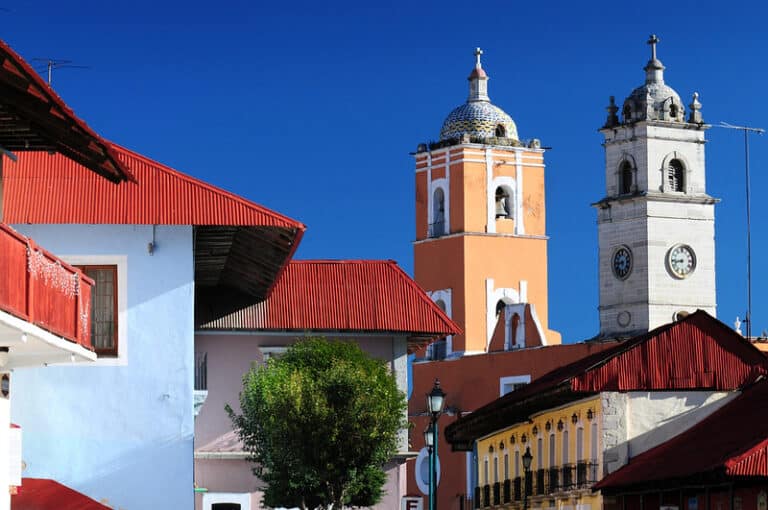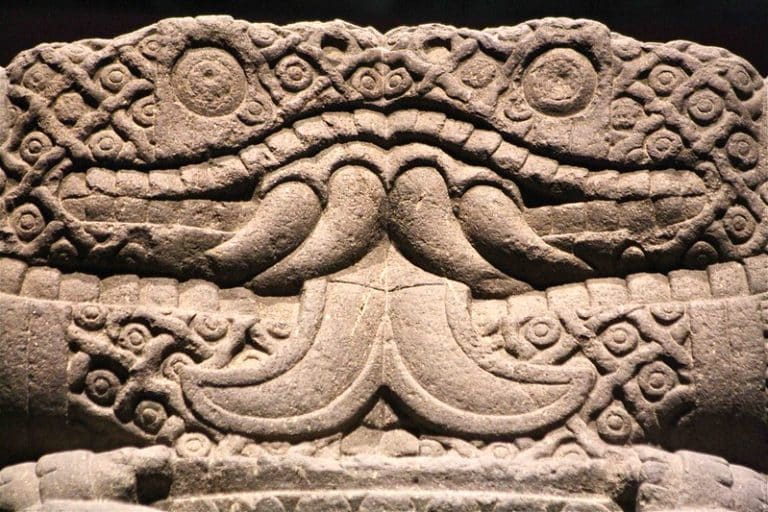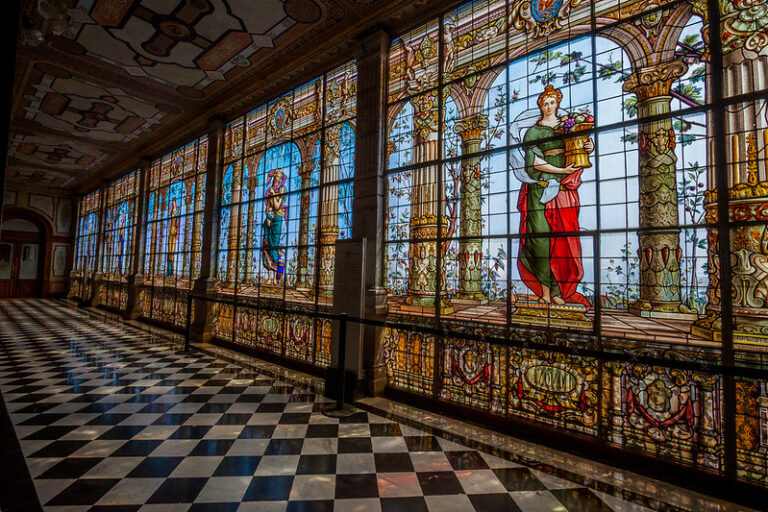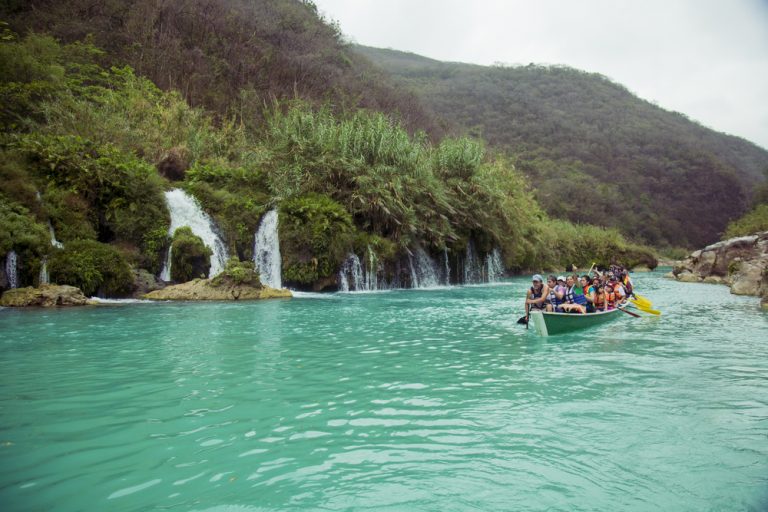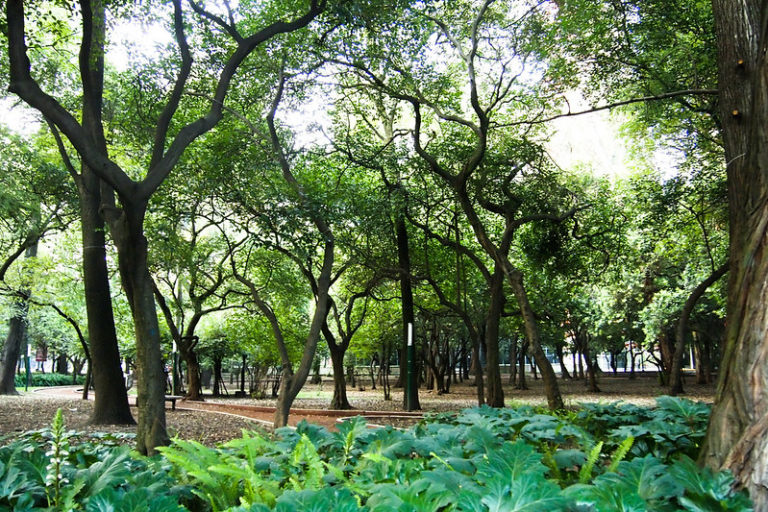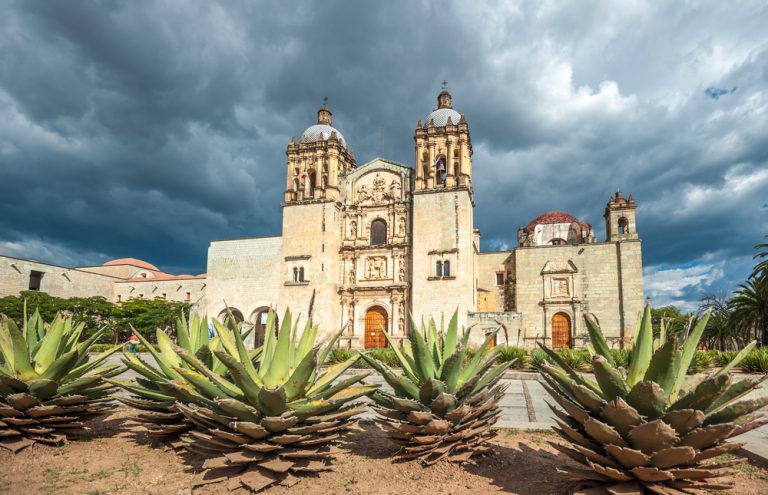Valle de Bravo: Your Ultimate Escape from Mexico City’s Bustle
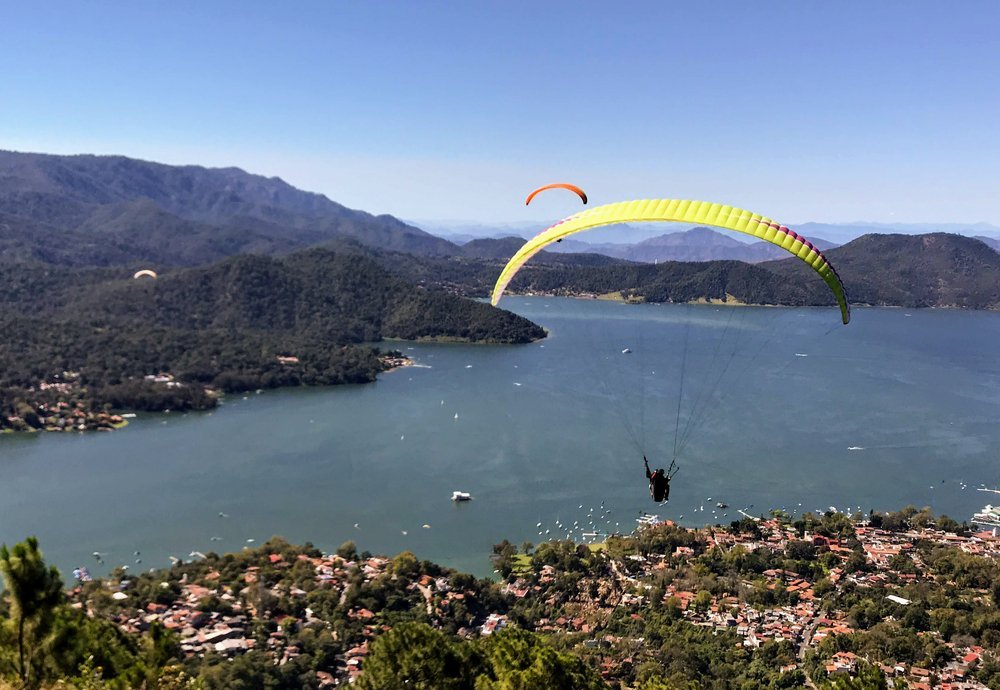
Valle de Bravo: Your Ultimate Escape from Mexico City’s Bustle
Valle de Bravo is located very close to Mexico City within the state of Mexico.
It is a haven of peace, beauty, comfortable mountain hotels, and delicious “Mexiquense” gastronomy.
Although this Magical Town is mainly known for its gorgeous lake, there are tons of other cool things to do and see!
Let’s check it out.
Getting to Valle de Bravo
Valle de Bravo has road facilities that make driving to Mexico City and other Mexican cities very comfortable, both by tollways and free highways.
Also, from Mexico City, Toluca, Puebla, Cuernavaca, and other cities there are coach companies to Valle de Bravo.
For air travel, the closest airport is Toluca. The rest of the trip to Valle de Bravo from Mexico City must be made by road.
How to get to Valle de Bravo from Mexico City
You can travel to Toluca taking the free highway exiting in Cuajimalpa or by the toll road exiting Santa Fe.
After passing the La Hortaliza toll booth, a detour leads to the toll road to Valle de Bravo.
15 Best things to do and see in Valle de Bravo, Mexico
1. Monte Alto State Park at Valle de Bravo
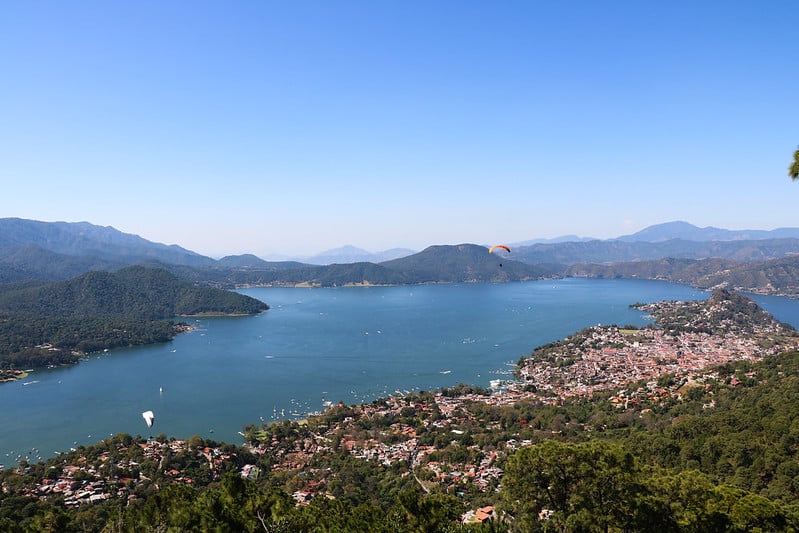
Monte Alto is a protected area near Valle de Bravo, as decreed in 2013 by the Mexican government.
It has more than 20 km of trails for hiking, horseback riding, and mountain biking, and points for paragliding and hang gliding.
According to their degrees of difficulty, the trails are sectored by beginners, intermediate and advanced athletes.
The Matlazinca Indians (who populated the area during pre-Hispanic times) called the place “Cerro de Agua” (Water Hill) because of the sound of the streams that flowed down through the green foliage during the rainy season.
Animal biodiversity includes hummingbirds, sparrows, owls, vultures, doves, hawks, rabbits, squirrels, and cacomixtles.
Monte Alto’s topography was formed by three volcanoes, whose profile has changed over time due to erosion, shaping the slopes on three of its four sides.
The park has various flora, including gully vegetation, mountain forests, mushrooms, and various orchids.
2. Stroll through the historic center of Valle de Bravo
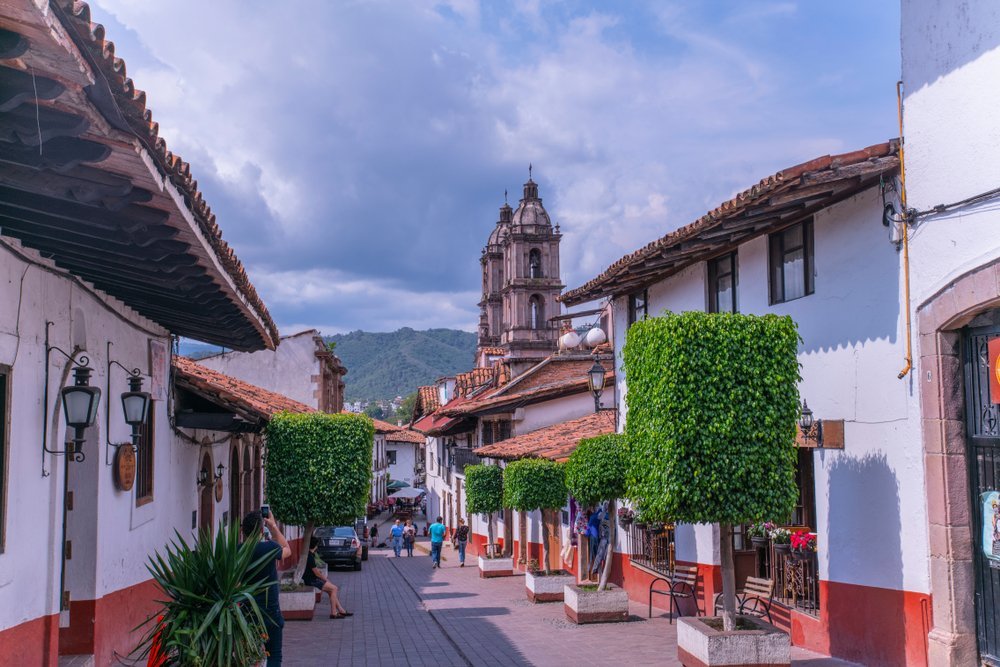
The Franciscans founded Valle de Bravo in the 16th century in an area inhabited by indigenous communities.
Its current name was adopted after the Independence as a tribute to the Insurgent Nicolás Bravo Rueda, president of the republic, on three occasions between 1839 and 1846.
From its viceregal past remains a beautiful historic center with cobblestone streets and houses with gabled roofs, large windows, and walls with wainscoting.
3. Visit the Black Christ of the Temple of Santa Maria Ahuacatlan

Among the things to do in Valle de Bravo, you can’t miss the sanctuary of Santa Maria Ahuacatlan, home of the famous Black Christ.
This image of Jesus on the Cross was located in a hacienda chapel that burned down, miraculously surviving the Christ, although it was turned black by the smoke.
The temple was built during the viceroyalty and was initially called the Chapel of Calvary.
In its interior are four large paintings of various legends alluding to the Black Christ.
The feast of the venerated image is May 3, the day of the Holy Cross and the temple.
On this date, Valle de Bravo is filled with pilgrims who pay tribute to the Black Christ from all the cities and towns of Mexico and nearby states.
4. Explore the Carmel Maranathá
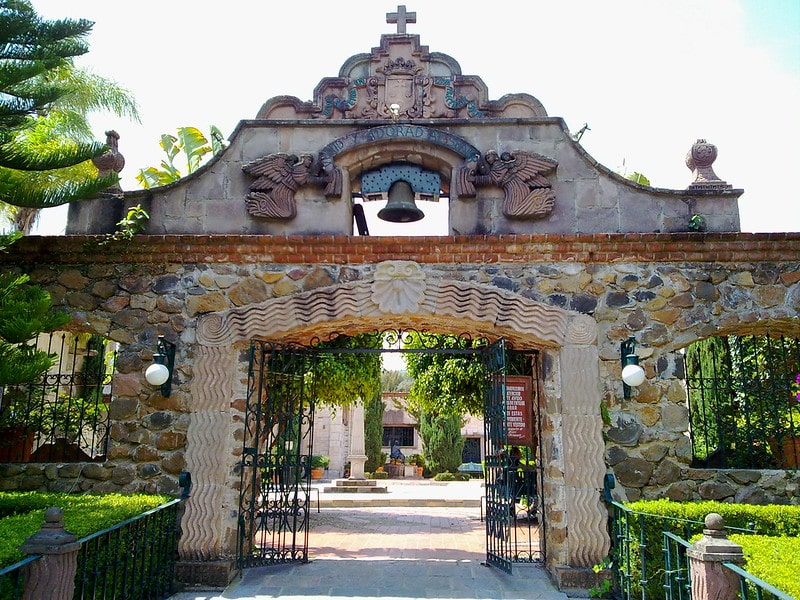
This is a Christian refuge with the appearance of a Hindu temple, located on the road to Amanalco de Becerra, 25 km northeast of Valle de Bravo.
Maranathá means “The Lord is coming” in Aramaic, the language believed to have been spoken by Jesus and his disciples and in which several books of the Bible were written.
It is a place of prayer, meditation, and retreat built in the 1970s by the Order of the Discalced Carmelites.
The Carmel Maranatha has a splendid facade and a beautiful interior decoration based on canvases, sculptures, and other artistic pieces.
Open to the public from 10:00 a.m. to 6:00 p.m.
5. Climb La Peña del Príncipe
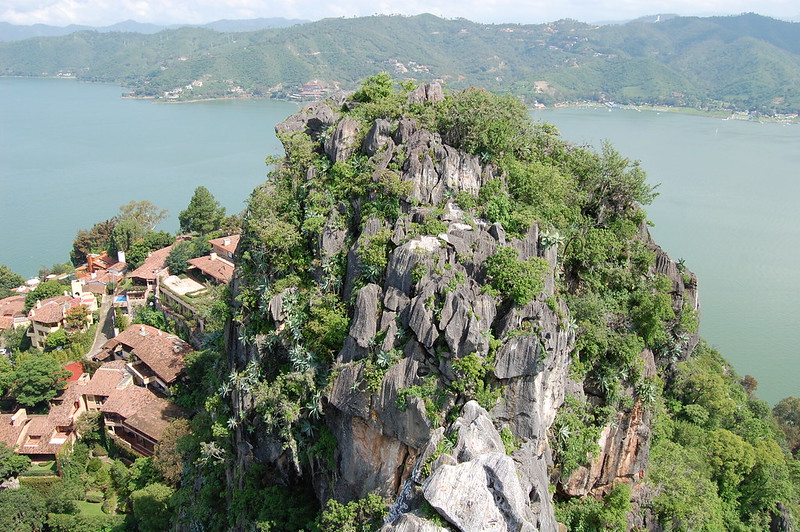
La Peña del Príncipe is a rocky promontory that serves as a natural viewpoint.
It is visible from different points of the town and is frequented by locals and visitors, especially at sunset, to see the beautiful sunsets of Valle de Bravo.
La Peña offers spectacular views of the entire valley and the lake that supplies water to the town, the scene of water sports and entertainment.
To ascend to La Peña del Príncipe, you can go directly from the main square of Valle de Bravo, going up Independencia Street, and then walk the old road to the promontory.
6. Admire the Great Stupa for World Peace
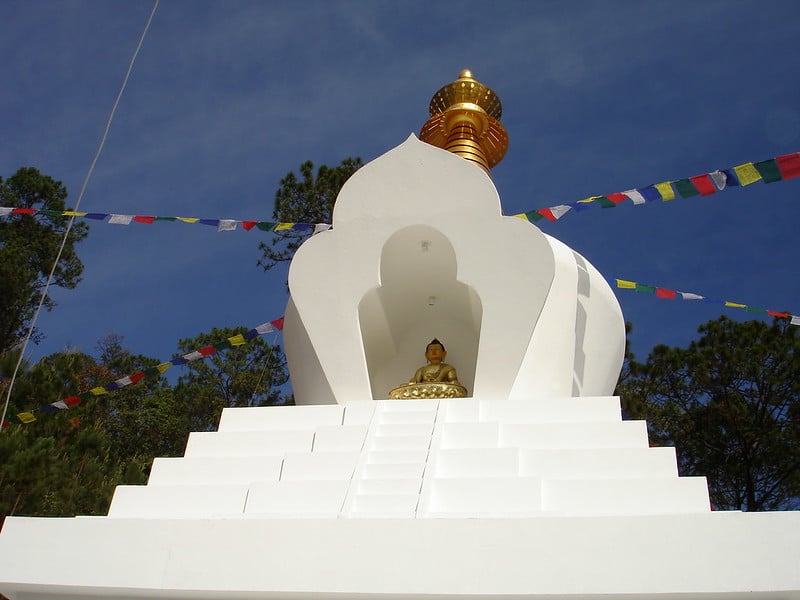
A stupa is a Buddhist monument inspired by ancient burial mounds and is common in Southeast Asia but not in the rest of the world.
The stupa erected near Valle de Bravo in the Rancheria Los Alamos, the first in Mexico, is 36 meters high, the largest in the Western World.
The construction contains an image of Buddha and a square base, a hemispherical vault, a conical tip, a crescent moon, and a disk, forms that symbolize the five cosmic elements of Buddhism: earth, water, fire, air, and ether or space.
Before building the monument, a purification ceremony was held for the site, for which several Buddhist followers came to Mexico.
The Great Stupa for World Peace in Valle de Bravo was consecrated in December 2010 in a ceremony led by the Venerable Yongdzin Tenzin Namdak.
7. Visit the Church of San Francisco de Asís
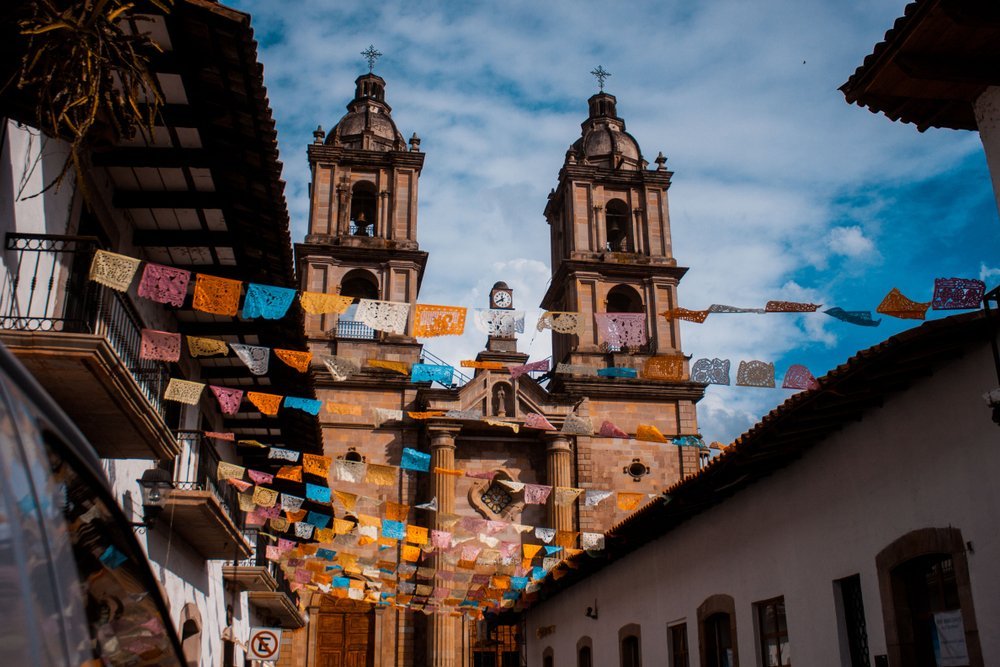
The twin towers in the neoclassical style of this temple are the tallest in the state of Mexico among religious buildings.
Its construction took more than 110 years since it was started in 1880 and finished in 1994.
The religious sculptures inside are from the 17th century.
It was built on the same site as a 17th-century temple with two naves, one for the whites and the other for the Indians.
The holy water deposit, the baptismal font, and the carved image of San Francisco de Asis come from the old viceroyalty church.
The main bell, called “Santa Barbara,” was destroyed during the Mexican Revolution, and later replaced by the “San Francisco” bell.
8. Discover the past of Valle de Bravo in its Archaeological Museum

This institution exhibits a collection of more than 450 archaeological pieces made by the ancient peoples that inhabited the current territory of the state of Mexico.
The objects were rescued from 18 archaeological sites, with some of the most outstanding human heads sculpted in stone.
There is also a display of pottery and figurines, jewelry, basketry, and other items made from local materials, such as natural fibers.
Also on display are spindle whorls, shredders, and other utensils from areas such as Tlalpizáhuac, Teotihuacan, San Miguel Ixtapan, Malinalco, Calixtlahuaca, and Tenango.
The Archaeological Museum of Valle de Bravo is located at Fray Gregorio Jiménez de la Cuenca, s/n, in the neighborhood of Santa María Ahuacatlán.
9. Visit Temoaya, Mexico

The main attractions of this town, located 77 km northeast of Valle de Bravo, are its artisan workshops (where wool rugs are made) and the Otomí ceremonial center (located at 3,200 meters above sea level).
The wool rugs are made in family workshops using ancient wooden looms, and it is a spectacle to admire how the colorful creations emerge as if by magic from the hands of skilled indigenous artisans.
Due to its altitude, Temoaya and its surroundings are training grounds for extreme sports athletes.
The ceremonial center was built in 1980 to provide the large Otomi community with a place to perform their traditional rites.
On March 18, the ceremony of the Fifth Sun is performed, and during the first Sunday of each month, a cult of invocating the cardinal points takes place.
10. Attend the Festival of the Souls
Participation in this festival is one of the best gifts for the spirit among all the things to do in Valle de Bravo.
Its official name is Festival Internacional Vallesano de Arte y Cultura de Las Almas, and it is held annually for nine days, before and after the Day of the Dead (Nov 1-2).
It was held for the first time in 2003 with the sponsorship of the Instituto Mexiquense de Cultura and the collaboration of other public and private entities of Valle de Bravo.
The town bustles with cultural activities everywhere during the festival, including theater, music, dance, ballet, art exhibits, puppet shows, and literary events.
The main venues are the Plaza de la Independencia, the Bicentennial Stadium, the Casa de la Cultura, the Archeological Museum, and the Joaquín Arcadio Pagaza Museum.
11. Join the International Festival of Music and Ecology

This festival has been held uninterruptedly since 1996 to promote ecological behavior using music as a means of conference and gathering.
Since 2002, the festival has given special attention to the conservation of the Valle de Bravo – Amanalco watershed, a source of fresh water for the population and the basis for a stream of recreational and ecological tourism, especially around the lake and the surrounding wooded areas.
The Valle de Bravo International Music and Ecology Festival supports environmental education programs and job skills development among the population, mainly women.
Concerts are performed by symphony orchestras, chamber orchestras, and pop bands, complemented by “land fairs” in which local agricultural producers showcase their crops.
12. Get a souvenir at the Mercado de Artesanías (handicrafts market)
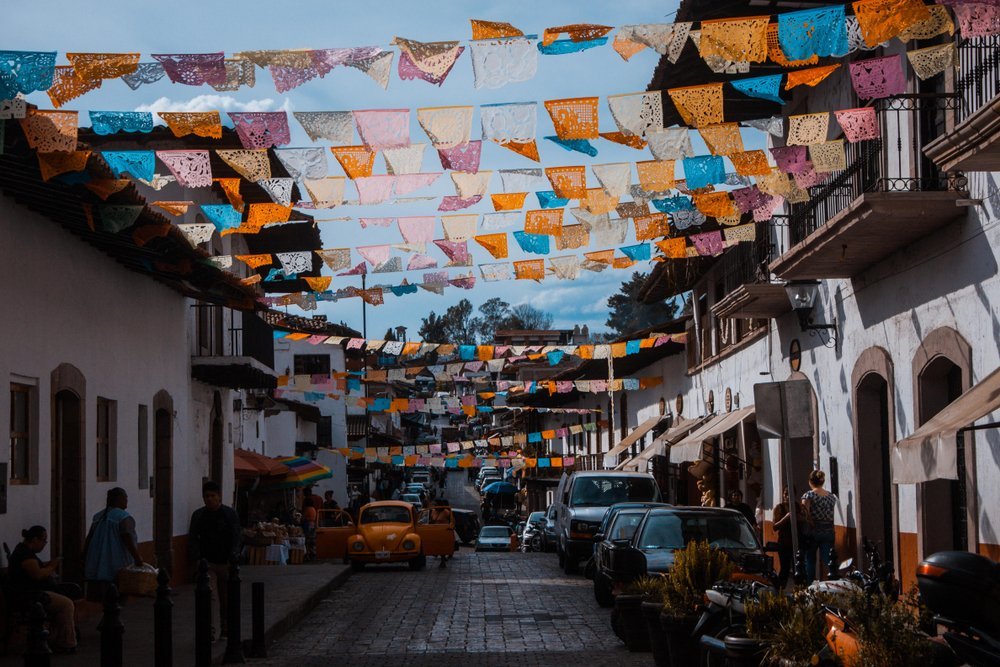
The famous artisans of Valle de Bravo make beautiful pieces with clay, natural fibers, wood, wrought iron, and other materials, which they sell at excellent prices at the Handicrafts Market in the center of town, four blocks from the main square, on Benito Juarez and Pañuelas.
You can purchase a piece of pottery made with brown clay extracted nearby and high-temperature ceramic utensils.
You can get wood and wrought iron furniture and doors to small decorative pieces.
Indigenous hands make the woven confections of the Matlatzinca, Otomi, and Mazahua communities of Valle de Bravo and other localities.
This market is open Monday through Friday, from 10:00 a.m. to 7:00 p.m., and Saturday and Sunday, from 10:00 a.m. to 8:00 p.m.
13. Taste Valle de Bravo’s food
In Valle de Bravo, you can taste pork carnitas, barbacoa, lamb consommés, pig’s head, and all the specialties of typical Mexican cuisine, accompanied by a sambumbia, which is a typical drink fermented with pineapple and piloncillo.
Several fish hatcheries and restaurants can prepare freshly caught rainbow trout.
On the shores of the lake, there are also picturesque restaurants where you can eat fish at reasonable prices.
If you are in the mood for international food in Valle de Bravo, you will find the following:
- VE Cocina Española (Spanish, European and Mediterranean cuisine)
- Soleado, Cocina del Mundo (Mexican, international and contemporary cuisine)
- La Viande Avándaro (French and Italian)
- Trattoria Toscana (Italian)
14. Tour the Joaquín Arcadio Pagaza Museum
This museum is located in an 18th-century building that was the residence of Bishop Joaquín Arcadio Pagaza y Ordóñez (1839 – 1918), an illustrious academic and writer from Valle de Bravo.
The museum exhibits a collection of objects that belonged to the prelate and other important works by local artists.
The Joaquín Arcadio Pagaza Museum also hosts theatrical productions, concerts, film screenings, conferences, and other cultural events.
15. Visit Ixtapan del Oro, near Valle de Bravo
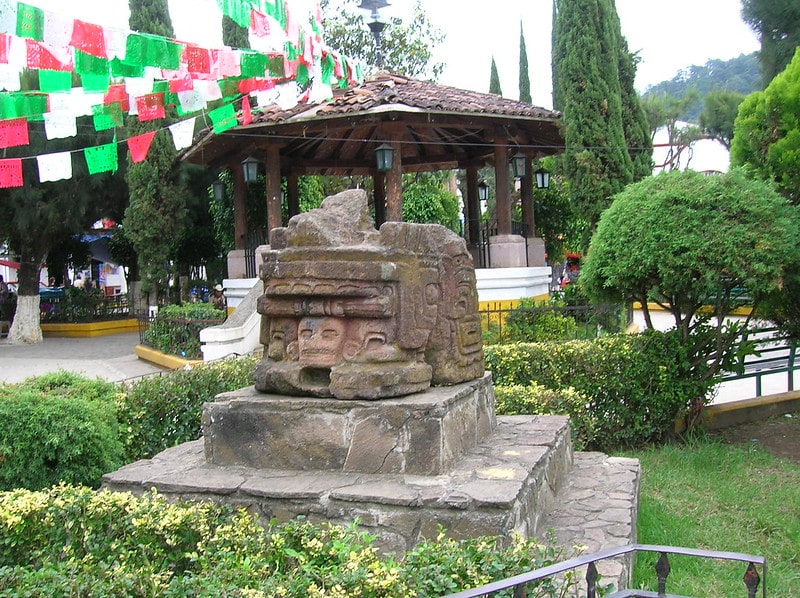
This is yet another cozy town in the state of Michoacán, only 50 km west of Valle de Bravo, almost on the border with Estado de Mexico.
It is a picturesque town, with beautiful red-roofed houses and a striking market, with a central garden in which there is a stone-carved figure of an Aztec goddess of unknown name.
A few minutes from Ixtapan del Oro is a beautiful waterfall called El Salto, 50 meters high.
Another thing to do in Ixtapan del Oro is to visit Las Salinas, a hot springs site with cabins in the middle of beautiful landscapes and green areas.
Valle de Bravo, Mexico: The Lake
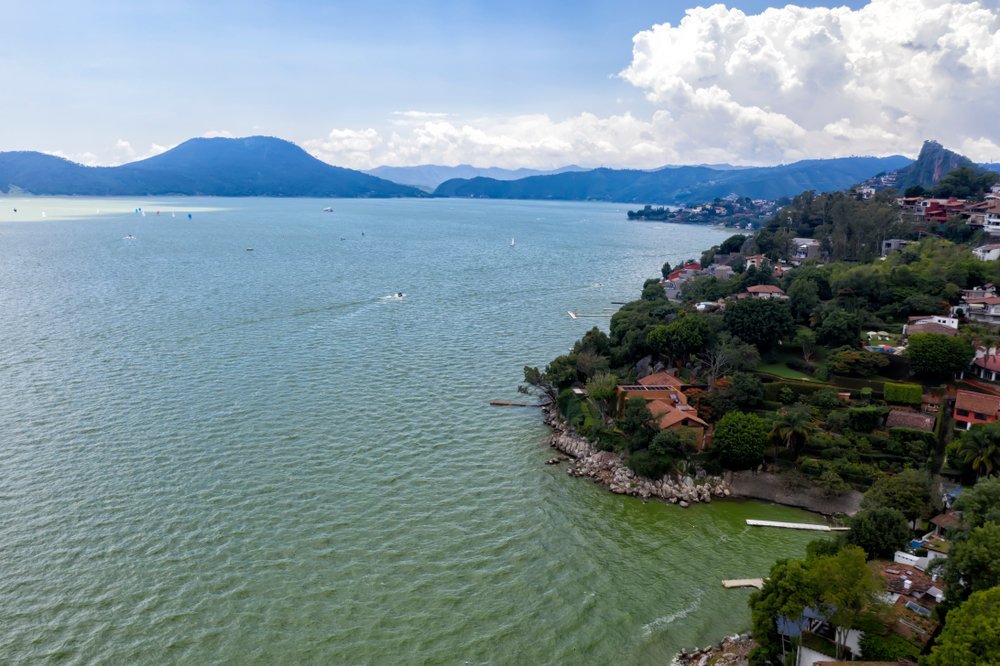
The lake of Valle de Bravo was originally a reservoir formed in the 1940s to retain the waters of the Avándaro River as part of the Miguel Alemán hydroelectric system.
The hydroelectric plant was closed, leaving the lake as a source of fresh water and a tourist attraction.
You can fish and practice water activities in the lake, such as canoeing, boating, sailing, skiing, and flyboarding.
You’ll also find several floating restaurants serving fresh fish and other specialties.
Piedra Herrada Monarch Butterfly Sanctuary
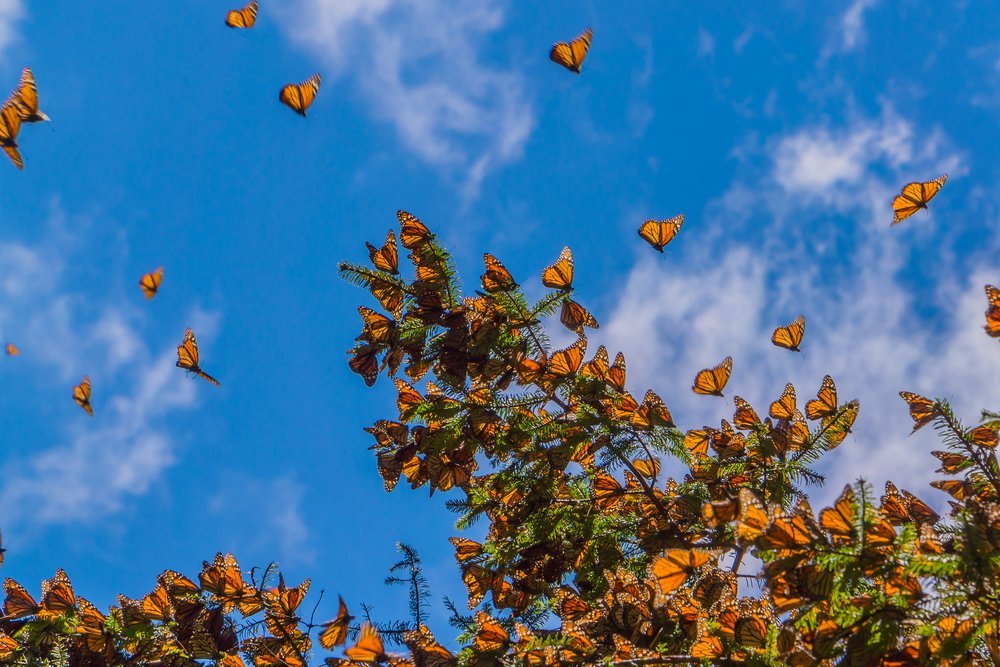
If you are in Valle de Bravo between November and March, you can’t miss this natural sanctuary to admire the beauty of the monarch butterfly.
Learn more about monarch butterflies in Mexico.
Millions of these butterflies migrate from the distant northern lands to reproduce in the most hospitable environments of the forests of Mexico and Michoacán.
Visit the Casa Gironella
When he was in Mexico, the notable 20th-century painter from the capital, Alberto Gironella, shared his residence between Mexico City and Valle de Bravo.
His refuge in Valle de Bravo is known as Casa Gironella.
Gironella was a representative of La Ruptura, a trend that emerged in the 1950s as a response to the school of the great muralists (Orozco, Rivera, and Siqueiros), who monopolized the Mexican artistic environment, attention, and work.
Alberto Gironella died on August 2, 1999, and on November 2, Day of the Dead of the same year, part of his ashes were scattered in the lake of Valle de Bravo in a night ceremony held as part of the Festival of the Souls.
The house where the painter lived in Valle de Bravo is a tourist interest where some of his works and objects are exhibited.
What to do in Valle de Bravo Mexico at night?
You have several nightlife options in its various cozy nightclubs and bars where you can have some drinks, dance, and enjoy delicious snacks.
- Pachanga: is the favorite place for girls and boys from Valle de Bravo to “pachanguear” (Mexican slang for partying). It has a well-stocked and crowded bar, and the DJs don’t allow for a second of boredom. Pachanga is located at Boca Negra 204
- Club Mango: It is the perfect place in Valle de Bravo to dance merengue, salsa, and other Caribbean rhythms, near the town’s lighthouse. Its tropical cocktails are first-class
- La Pila Seca: It is a nightclub located on Calzada Santa María 100 that always seems small because of the atmosphere and the large number of customers that crowd it. The night starts to get hot at 11:00 p.m., and by 12 p.m., it is already a hive of people drinking and having fun, while they ask the DJ for their favorite music
- Enebro: This is a dancing club with excellent music and a wide range of drinks. It is located on Santa Maria Street, one block from the Costera del Lago
Valle de Bravo hotels
Valle de Bravo has magnificent hotels and cabins that offer a relaxing and comfortable stay, with all the necessary services and succulent breakfasts to start the day with maximum energy.
You can also find gorgeous cabins around the lake.
Since there are many lodging options here, you can browse your favorite online travel agency to find the best fit for your needs.
I’m sure you will enjoy Valle de Bravo as much as I did; there’s no reason not to.
Don’t forget to write your comments below and share this post with your friends so they can spread the word about this Magical Town.

